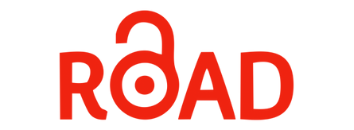The Role of Financial Ratios on the Financial Distress Prediction
DOI:
https://doi.org/10.24002/kinerja.v25i2.4661Abstract
Predictions of financial distress has a central role for the company's going concern aspects. This research aims to empirically prove the role of profitability, leverage and liquidity in financial distress. The research population comprised all companies incorporated in the agricultural sector as well as basic industry and chemical sectors. The research sample obtained as many as 380 observations through the purposive sampling method. This study uses logistic regression analysis. This study provides evidence of significant role between profitability and liquidity on financial distress condition in the agricultural sector as well as the basic industry and chemical sectors. In the basic industry and chemical sectors, leverage has a significant role on financial distress condition.
References
Altman, E. I. (1968) ‘Financial Ratios, Discriminant Analysis And The Prediction Of Corporate Bankcrupty’, The Journal of Finance, XXIII(1), pp. 589–609. doi: 10.1111/j.1540-6261.1946.tb01544.x.
Altman, E. I. and Hotchkiss, E. (2006) Corporate Financial Distress and Bankruptcy: Predict and Avoid Bankruptcy, Analyze and Invest in Distressed Debt. Third Edit, Wiley Finance. Third Edit. United States of America: Wiley Finance. doi: 10.1561/0500000009.
Assaji, J. P. and Machmuddah, Z. (2019) ‘Rasio Keuangan Dan Prediksi Financial Distress’, Jurnal Penelitan Ekonomi dan Bisnis, 2(2), pp. 58–67. doi: 10.33633/jpeb.v2i2.2042.
Atika, G. A., Jumaidi A W and Kholis, A. (2020) ‘Pengaruh Likuiditas Dan Ukuran Perusahaan Terhadap Financial Distress’, in Prosiding WEBINAR Fakultas Ekonomi Universitas Negeri Medan, pp. 86–101. Available at: http://repository.unsada.ac.id/cgi/oai2.
Baker, H. K. and Martin, G. S. (2011) Capital Structure and Corporate Financing Decisions: Theory, Evidence, and Practice, Capital Structure and Corporate Financing Decisions: Theory, Evidence, and Practice. doi: 10.1002/9781118266250.
Baker, H. K., Singleton, J. C. and Veit, E. T. (2011) Survey Research in Corporate Finance, Survey Research in Corporate Finance. New York: Oxford University Press Inc. doi: 10.1093/acprof:oso/9780195340372.001.0001.
Balasubramanian, S. A. et al. (2019) ‘Modeling corporate financial distress using financial and non-financial variables: The case of Indian listed companies’, International Journal of Law and Management, 61(3–4), pp. 457–484. doi: 10.1108/IJLMA-04-2018-0078.
Beaver, W. H. (1966) ‘Financial Ratios As Predictors Of Failure’, Journal of Accounting Research, 4(1966), pp. 71–111.
Berk, Jonathan;DeMarzo, Peter;Harford, J. (2015) Fundamental of Corporate Finance. Ninth Edit. New York: McGraw-Hill Education.
Charalambakis, E. C. and Garrett, I. (2019) ‘On corporate financial distress prediction: What can we learn from private firms in a developing economy? Evidence from Greece’, Review of Quantitative Finance and Accounting, 52(2), pp. 467–491. doi: 10.1007/s11156-018-0716-7.
Dance, M. and Made, S. I. (2019) ‘Financial Ratio Analysis in Predicting Financial Conditions Distress in Indonesia Stock Exchange’, Russian Journal of Agricultural and Socio-Economic Sciences, 86(2), pp. 155–165. doi: 10.18551/rjoas.2019-02.18.
Dewi, A. R. S. and Wahyuliana, E. (2019) ‘Analysis of profit performance and asset management to financial distress bakrie group company listing in Indonesia stock exchange’, International Journal of Scientific and Technology Research, 8(3), pp. 106–110.
García, V. et al. (2019) ‘Dissimilarity-Based Linear Models for Corporate Bankruptcy Prediction’, Computational Economics, 53(3), pp. 1019–1031. doi: 10.1007/s10614-017-9783-4.
Geng, R., Bose, I. and Chen, X. (2015) Prediction of financial distress: An empirical study of listed Chinese companies using data mining, European Journal of Operational Research. Elsevier B.V. doi: 10.1016/j.ejor.2014.08.016.
Giannopoulos, G. and Sigbjørnsen, S. (2019) ‘Prediction of Bankruptcy Using Financial Ratios in the Greek Market’, Theoretical Economics Letters, 09(04), pp. 1114–1128. doi: 10.4236/tel.2019.94072.
Giovanni, A., Utami, D. W. and Widiyaningrum, E. (2020) ‘Size, Growth, Profitability and Capital Structure’, Jurnal REKOMEN, 4(1), pp. 81–90.
Giovanni, A., Utami, D. W. and Yuzevin, T. (2020) ‘Leverage dan Profitabilitas dalam Memprediksi Financial Distress Perusahaan Pertambangan Periode 2016-2018’, Journal of Business and Banking, 10(1), pp. 151–167. Available at: https://journal.perbanas.ac.id/index.php/jbb/article/view/2292.
Hantono. (2019) ‘Memprediksi Financial Distress Dengan Menggunakan Model Altman Score, Grover Score, Zmijewski Score (Studi Kasus Pada Perusahaan Perbankan)’, Going Concern : Jurnal Riset Akuntansi, 14(1), pp. 168–180. doi: 10.32400/gc.14.1.22372.2019.
Jayasekera, R. (2018) ‘Prediction Of Company Failure: Past, Present And Promising Directions For The Future’, International Review of Financial Analysis, 55, pp. 196–208. doi: 10.1016/j.irfa.2017.08.009.
Jensen, M. C. and Meckling, W. H. (1976) ‘Theory of The Firm: Managerial Behavior, Agency Costs and Ownership Structure’, Journal of Financial Economics, 3(4), pp. 305–360. doi: 10.1016/0304-405X(76)90026-X.
Karugu, C., Achoki, G. and Kiriri, P. (2018) ‘Capital Adequacy Ratios as Predictors of Financial Distress in Kenyan Commercial Banks’, Journal of Financial Risk Management, 07(03), pp. 278–289. doi: 10.4236/jfrm.2018.73018.
Khoja, L., Chipulu, M. and Jayasekera, R. (2019) ‘Analysis of financial distress cross countries: Using macroeconomic, industrial indicators and accounting data’, International Review of Financial Analysis, 66(February), pp. 1–12. doi: 10.1016/j.irfa.2019.101379.
Kisman, Z. and Krisandi, D. (2019) ‘How to Predict Financial Distress in the Wholesale Sector: Lesson from Indonesian Stock Exchange’, Journal of Economics and Business, 2(3), pp. 569–585. doi: 10.31014/aior.1992.02.03.109.
Liang, D. et al. (2016) ‘Financial Ratios And Corporate Governance Indicators In bankruptcy Prediction: A Comprehensive Study’, European Journal of Operational Research, 252(2), pp. 561–572. doi: 10.1016/j.ejor.2016.01.012.
Lind, D. A., Marchal, W. G. and Wathen, S. A. (2019) Basic Statistics for Business & Economics. Ninth Edit. New York: McGraw-Hill Education.
Mangesti Rahayu, S., Suhadak and Saifi, M. (2019) ‘The Reciprocal Relationship Between Profitability and Capital Structure and Its Impacts on The Corporate Values of Manufacturing Companies In Indonesia’, International Journal of Productivity and Performance Management, 69(2), pp. 236–251. doi: 10.1108/IJPPM-05-2018-0196.
Masitoh, S. and Setiadi, I. (2017) ‘PENGARUH LIKUIDITAS, PROFITABILITAS, DAN LEVERAGE TERHADAP FINANCIAL DISTRESS’, Competitive Jurnal Akuntansi dan Keuangan, 4(1), pp. 25–36.
Moch, R., Prihatni, R. and Buchdadi, A. D. (2019) ‘The effect of liquidity, profitability and solvability to the financial distress of manucatured companies listed on the Indonesia stock exchange (IDX) period of year 2015-2017’, Academy of Accounting and Financial Studies Journal, 23(6), pp. 1–16.
Mousavi, M. M., Ouenniche, J. and Xu, B. (2015) ‘Performance Evaluation Of Bankruptcy Prediction Models: An Orientation-Free Super-Efficiency DEA-Based Framework’, International Review of Financial Analysis, 42, pp. 64–75. doi: 10.1016/j.irfa.2015.01.006.
Mselmi, N., Lahiani, A. and Hamza, T. (2017) ‘Financial distress prediction: The case of French small and medium-sized firms’, International Review of Financial Analysis, 50, pp. 67–80. doi: 10.1016/j.irfa.2017.02.004.
Myer, S. C. (1984) ‘The Capital Structure Puzzle’, The Journal of Finance, 39(3), pp. 575–592.
Myers, S. C. and Majluf, N. S. (1984) ‘Corporate Financing and Investment Decisions When Firms Have Information The Investors Do Not Have’, Journal of Finance Economics, 13(2), pp. 187–221. doi: 10.1016/S0040-4039(00)91429-1.
Neves, M. E. et al. (2020) ‘Capital structure decisions in a period of economic intervention: Empirical evidence of Portuguese companies with panel data’, International Journal of Accounting and Information Management, 28(3), pp. 465–495. doi: 10.1108/IJAIM-08-2019-0094.
Nirmalasari, L. (2018) ‘Analisis Financial Distress Pada Sektor Property, Real Estate dan Kontruksi Bangunan yang Terdaftar di Bursa Efek Indonesia’, Jurnal Manajemen Bisnis Indonesia, 1, pp. 46–61.
Ogachi, D. et al. (2020) ‘Corporate Bankruptcy Prediction Model, a Special Focus on Listed Companies in Kenya’, Journal of Risk and Financial Management, 13(3), pp. 1–14. doi: 10.3390/jrfm13030047.
Orlova, S., Harper, J. T. and Sun, L. (2020) ‘Determinants of capital structure complexity’, Journal of Economics and Business, pp. 1–19. doi: 10.1016/j.jeconbus.2020.105905.
Oz, I. O. and Simga-Mugan, C. (2018) ‘Bankruptcy Prediction Models’ Generalizability: Evidence From Emerging Market Economies’, Advances in Accounting, 41(February), pp. 114–125. doi: 10.1016/j.adiac.2018.02.002.
Pham Vo Ninh, B., Do Thanh, T. and Vo Hong, D. (2018) ‘Financial Distress And Bankruptcy Prediction: An Appropriate Model For Listed Firms In Vietnam’, Economic Systems, 42(4), pp. 616–624. doi: 10.1016/j.ecosys.2018.05.002.
Pulungan, K. P. A. et al. (2017) ‘Pengaruh Likuiditas Dan Leverage Terhadap Financial Distress Pada Perusahaan Sub Sektor Keramik, Porselen dan Kaca Yang Terdaftar Di Bursa Efek Indonesia’, Financial: Jurnal Akuntansi, 3(2), pp. 1–9.
Ross, S. A. et al. (2017) Essentials of Corporate Finance (9e). Ninth Edit. New York: McGraw-Hill Education.
Available at: file:///Files/22/2202987B-E44F-49F8-9616-0F638F13C4E0.pdf.
Safitri, E. and Fitantina (2016) ‘Analisis Prediksi Kebangkrutan Pada Perusahaan Perbankan Go Public Di Bursa Efek Indonesia’, Jurnal Ilmiah STIE MDP, 6(1), pp. 16–28.
Sekaran, U. and Bougie, R. (2016) Research Methods for Business. Seventh Ed, Encyclopedia of Quality of Life and Well-Being Research. Seventh Ed. United Kingdom: John Wiley and Sons. doi: 10.1007/978-94-007-0753-5_102084.
Shahwan, T. M. (2015) ‘The Effects of Corporate Governance on Financial Performance and Financial Distress: Evidence from Egypt’, Historia de la nación y del nacionalismo español, 15(5), pp. 1–32. doi: http://dx.doi.org/10.1108/CG-11-2014-0140.
Sikveland, M. and Zhang, D. (2020) ‘Determinants of capital structure in the Norwegian salmon aquaculture industry’, Marine Policy, 119(May), pp. 1–7. doi: 10.1016/j.marpol.2020.104061.
Sucipto, A. W. and Muazaroh (2017) ‘Kinerja Rasio Keuangan Untuk Memprediksi Kondisi Financial Distress Pada Perusahaan Jasa Di Bursa Efek Indonesia Periode 2009-2014’, Journal of Business & Banking, 6(1), pp. 81–98. doi: 10.14414/jbb.v6i1.893.
Sukamulja, S. (2019) Analisis Laporan Keuangan Sebagai Dasar Pengambilan Keputusan Investasi. Yogyakarta: Andi & BPFE.
Sunarji, A. and Sufyani, M. A. (2017) ‘Rasio Keuangan Dalam Memprediksi kondisi Financial distress Perusahaan Tekstil dan Garmen’, Jurnal Riset Bisnis dan Manajemen, 10(2), pp. 11–23.
Supriyanto, J. and Darmawan, A. (2018) ‘the Effect of Financial Ratio on Financial Distress in Predicting Bankruptcy’, Journal of Applied Managerial Accounting, 2(1), pp. 110–120. doi: 10.30871/jama.v2i1.727.
Veganzones, D. and Severin, E. (2020) ‘Corporate failure prediction models in the twenty-first century: a review’, European Business Review, a head of(a head of print). doi: 10.1108/EBR-12-2018-0209.
Yadiati, W. (2017) ‘The Influence Of Profitability On Financial Distress: A Research On Agricultural Companies Listed In Indonesia Stock Exchange’, Journal of Scientific & Technology Research, 6(11), pp. 233–237.
Yazdanfar, D. and Öhman, P. (2020) ‘Financial Distress Determinants Among SMEs: Empirical Evidence From Sweden’, Journal of Economic Studies, 47(3), pp. 547–560. doi: 10.1108/JES-01-2019-0030.
Zhang, D. and Liu, D. (2017) ‘Determinants of the capital structure of Chinese non-listed enterprises: Is TFP efficient?’, Economic Systems, 41(2), pp. 179–202. doi: 10.1016/j.ecosys.2016.12.003.
Zmijweski, M. E. (1984) ‘Methodological Issues Related to the Estimation of Financial Distress Prediction Models’, Journal of Accounting Research, 22, pp. 59–82.














